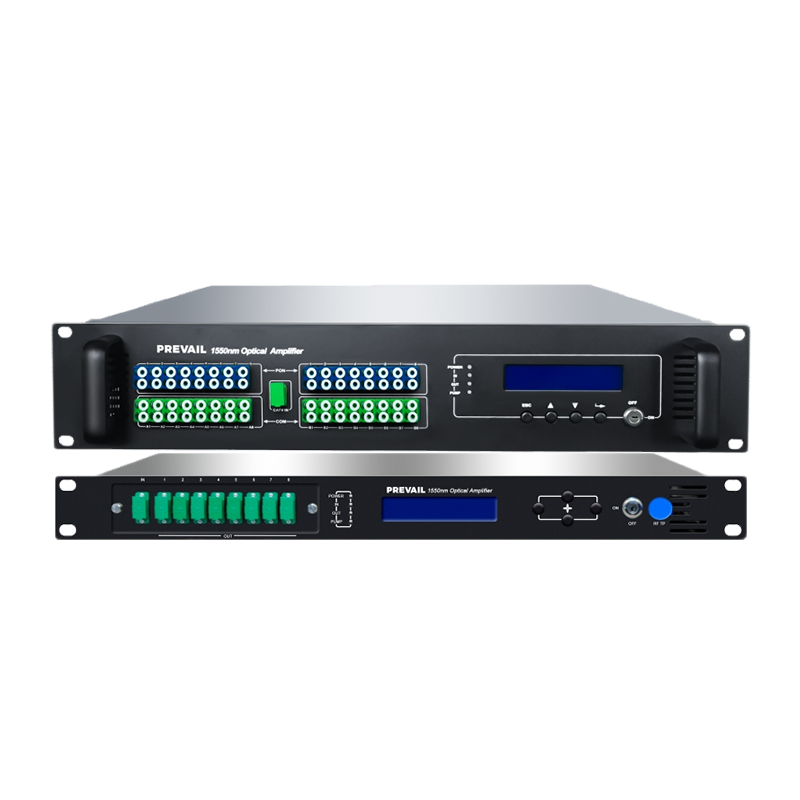How does HFC transmission equipment support the efficient operation of modern communication networks?
In today's rapidly developing information age, the advancement of communication technology has promoted the realization of global interconnection. As an important part of cable TV networks and broadband access, hybrid fiber-coaxial cable (HFC) transmission equipment has become one of the core infrastructures of modern communication networks.
The working principle of HFC transmission equipment can be divided into the following key steps:
Signal generation and modulation
In the central office (Headend), various data, voice and video signals are integrated and converted into optical signals suitable for optical fiber transmission through modulation technology.
Fiber optic transmission
The optical signal is transmitted to the regional node (Optical Node) at a very high speed through the optical fiber backbone network. Optical fiber has the characteristics of low loss and high bandwidth, and can support long-distance and large-capacity data transmission.
Optical-to-electrical conversion
At the regional node, the optical signal is converted into an electrical signal by an optical-to-electrical converter. This process is a key link in the HFC network, ensuring that the signal can continue to be transmitted in the coaxial cable.
Coaxial cable distribution
The converted electrical signal is distributed to the end user through the coaxial cable. Coaxial cable has a wide coverage area and can directly connect to the user's home or business to provide last-mile access services.

Signal demodulation and reception
The user-side equipment (such as a set-top box or modem) demodulates the received signal and restores it to the original data, voice or video content.
Technical characteristics
The design and deployment of HFC transmission equipment needs to meet a variety of technical requirements to ensure its performance and reliability:
High bandwidth support
The optical fiber part provides extremely high bandwidth to support multi-channel high-definition television, ultra-high-speed Internet access, and VoIP (Voice over IP) services.
Two-way communication capability
The HFC network not only supports downstream signal transmission, but also has upstream signal transmission capabilities to meet the needs of users to upload data, such as video conferencing or online gaming.
Wide coverage
The popularity of coaxial cable enables HFC networks to quickly expand their coverage, especially for densely populated areas such as cities and suburbs.
Flexibility and scalability
The HFC network can easily expand its capacity by upgrading equipment or adding nodes to adapt to growing user needs.
Cost-effectiveness
Compared with all-fiber networks, HFC networks are less expensive to build and maintain while still providing high-quality services.
Application fields
HFC transmission equipment has been widely used in many fields due to its versatility:
Cable TV (CATV)
HFC networks were originally used mainly for the transmission of cable TV signals and are still the main infrastructure for broadcasting and television services worldwide.
Broadband Internet Access
With the popularization of the Internet, HFC networks are widely used to provide high-speed broadband access services, supporting applications such as streaming media, online games and cloud computing.
Voice Communication (VoIP)
HFC networks support voice communication services based on IP protocols, providing users with cost-effective telephone solutions.
Smart City and Internet of Things
In the construction of smart cities, HFC networks can be used to connect various IoT devices, such as smart meters, security cameras and environmental monitoring sensors.
Enterprise Communications
Many companies use HFC networks to build internal communication systems to support functions such as video conferencing, file sharing and remote office.
Environmental Challenges and Future Outlook
Although HFC transmission equipment has excellent performance, its construction and operation still face certain environmental challenges. For example, the copper material in coaxial cables may lead to resource waste; the equipment may consume a lot of electricity during operation. To this end, the industry is actively exploring more environmentally friendly solutions, such as developing low-power devices or using recyclable materials.
Looking to the future, with the development of 5G, fiber to the home (FTTH) and next-generation network technologies, HFC transmission equipment is expected to achieve a higher technical level. For example, the introduction of artificial intelligence and big data analysis to optimize network performance; improve bandwidth utilization through dynamic spectrum management; or gradually transition to an all-fiber network to meet the demand for higher bandwidth in the future.
As an important part of modern communication networks, HFC transmission equipment not only provides users with stable and high-speed communication services, but also lays the foundation for social informatization and digital transformation. In the future, with the continuous innovation of technology, HFC transmission equipment will surely make greater breakthroughs in intelligence, environmental protection and efficiency, and continue to provide more possibilities for the development of human society.

















